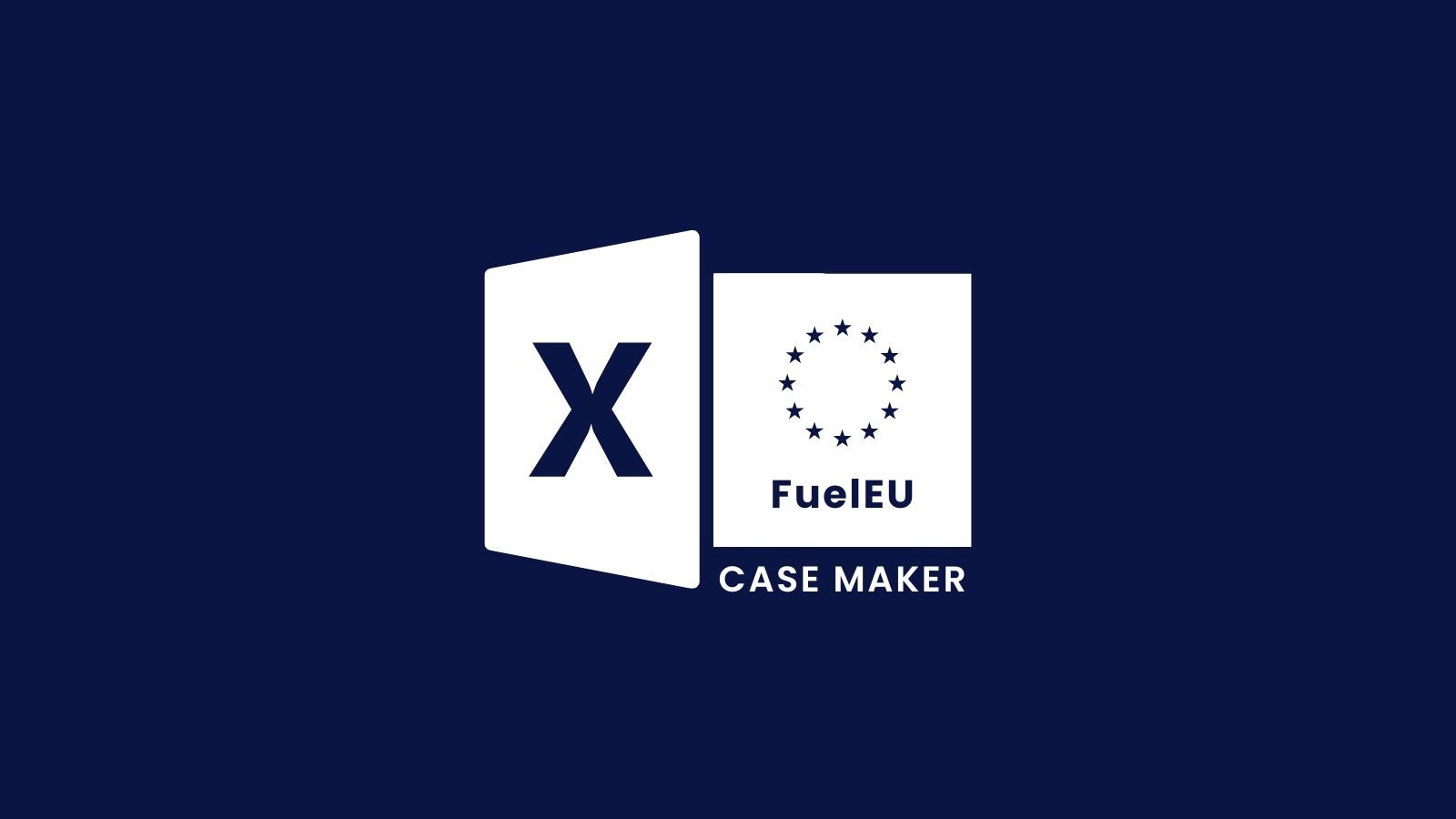FuelEU compliance penalty for all fuels
Determine FuelEU, ETS and fuel costs for different cases to make a FuelEU strategy
FuelEU Maritime is complicated, confusing and time-consuming. We do not know why the EU wants to make life so hard. All we know is that our goal is to make yours easier. The FuelEU Case Maker is one of our tools to do so.
With the FuelEU Case Maker, you can compare cost impact of FuelEU, EU ETS and the fuel itself for up to five different cases. You are able to choose between all listed fuels of FuelEU Maritime, blend different quantities of fuel and compare the cost outlook until 2050. You can even change fuel properties to reflect your own fuel blends, especially useful if you have specific biofuel blends that are not listed in the regulation. As icing on the cake, total pool balance calculations are included to get an estimate of potential revenue with a pool surplus.
Download FuelEU Case Maker
The premium version can be used to calculate up to 10 different cases and allows for more customization options including shore power and wind-propulsion factors.
This Excel sheet will allow you to perform and save your own analyses on FuelEU and help to determine a FuelEU strategy for your fleet.
FuelEU Maritime in a nutshell
Check the FuelEU Maritime section for the latest updates
FuelEU Maritime is an EU mandated regulation that applies to all ships of above 5,000 gross tonnage that serve the purpose of transporting passengers or cargo for commercial purposes, regardless of their flag, arriving at or departing from EU/EEA ports. The goal of FuelEU Maritime is to reduce greenhouse gas (GHG) emissions of ships when travelling to, from or within the EU. Broadly speaking FuelEU Maritime requirements consist of:
Provisions setting a limit of GHG intensity [gCO2 eq / MJ] of energy used on board. From 2025 onwards, shipping companies subject to FuelEU need to calculate emissions per unit of energy used on board, based on their reported fuel consumption and the emissions factors of their respective fuels.
Provisions mandating the use of shore power (onshore power supply / OPS) or zero-emission technology in port for containerships and passenger ships while moored while in EU/EEA port from 2030 onwards.
FuelEU Maritime puts the responsibility for compliance on the shipping company. Ships subject to FuelEU Maritime are required to monitor fuel consumption, data and voyage information as per their FuelEU Monitoring and Reporting Plan. The shipowner is required to report this information each year to an accredited verifier as per their FuelEU Report. Data collected by EU MRV Regulations is to be used when carrying out FuelEU Maritime calculations and reporting. The verifier calculates greenhouse gas (GHG) intensity for the reporting year, determines (non-)compliance to the regulation and calculates penalties.
Failure to comply with the regulations means a shipping company exceeds the GHG intensity limits. In this case the shipping company is obliged to pay a penalty for the excess. The GHG intensity limit will be strengthened every five years: 2% as of 2025, 6% as of 2030, 14.5% as of 2035, 31% as of 2040, 62% as of 2045 and 80% as of 2050 in comparison to a reference value of 91.16 [gCO2eq/MJ].














FuelEU Maritime is one of the most stringent upcoming laws on maritime sustainability, enforcing strict fuel reduction targets in combination with penalties on fuel combustion and shore power obligations for container and passenger ships.